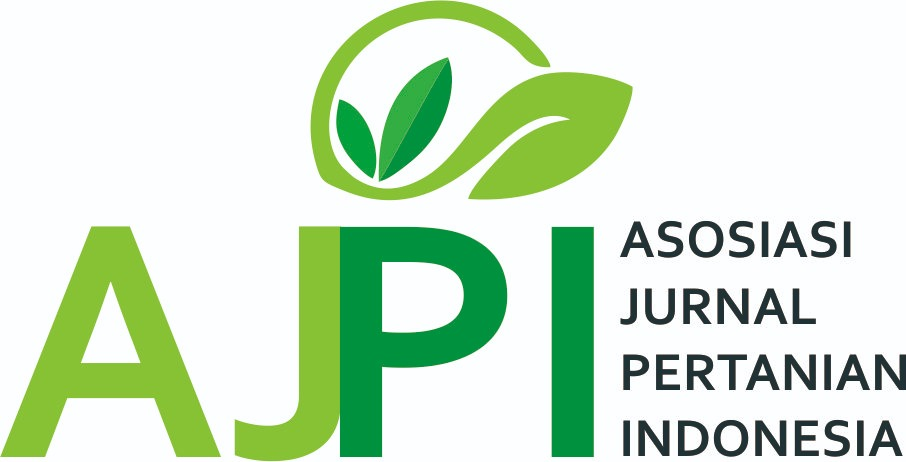Evaluation Of Gmp And Recommendation Of Haccp At Sme Robusta Coffee In Tanggamus, Lampung
Abstract
Coffee was a type of beverage that widely consumed and favored by Indonesians. The level of coffee consumption in Indonesia increases every year. Lampung is one of the largest coffee producing provinces in Indonesia with Tanggamus being the 2nd highest coffee-producing district in Lampung. This has led to the growth of Small and Medium Enterprise (SME) of coffee at Tanggamus area, one of which was the processing of Robusta ground coffee. These SME produced robusta coffee to be marketed throughout Indonesia and often export to customers abroad. Therefore, SME owners must maintain the quality and quality of coffee by implementing GMP (Good Manufacturing Practices). This causes the need for evaluation of GMP at SME Tanggamus ground coffee to ensure product quality and quality as well as Yeast and Mold Plate also Total Plate Count testing to determine the level of product safety. In addition, there we also gived some recommendations for the application of the HACCP system to SME. Based on the results of observations on the application of GMP at SME Robusta Tanggamus Ground Coffee, there are 12 elements that are checked according to the requirements and there are 2 elements that should have an effort to improve. The results of YMP and TPC tests on Tanggamus robusta ground coffee products showed that the product did not contain mold, yeast, and microbes. Based on the recommendations for the application of the HACCP system, regular observations of the water used for washing coffee beans are required.
Downloads
References
[BPOM RI] Badan Pengawas Obat dan Makanan Republik Indonesia. 2014. Peraturan Kepala Badan Pengawas Obat Dan Makanan Republik Indonesia Nomor 11 Tahun 2014 Tentang Tata Cara Sertifikasi Cara Produksi Pangan Olahan Yang Baik.
[BPOM RI] Badan Pengawas Obat dan Makanan Republik Indonesia. 2019. Peraturan Badan Pengawas Obat dan Makanan Momor 13 Tahun 2019 Tentang Batas Maksimal Cemaran Mikroba dalam Pangan Olahan.
[BPOM RI] Badan Pengawas Obat dan Makanan Republik Indonesia. 2012. Peraturan Kepala BPOM RI Nomor HK.03.1.23.04.12.2207 Tentang Tata Cara Pemeriksaan Sarana Produksi Pangan Industri Rumah Tangga.
[BPOM RI] Badan Pengawas Obat dan Makanan Republik Indonesia. 2012. Peraturan Kepala Badan Pengawas Obat Dan Makanan Republik Indonesia Nomor HK.03.1.23.04.12.2206 Tentang Cara Produksi Pangan Yang Baik Untuk Industri Rumah Tangga.
[BPS] Badan Pusat Statistik Provinsi Lampung. 2014. Lampung Dalam Angka
[BPS] Badan Pusat Statistik Provinsi Lampung. 2015. Produksi Perkebunan Kopi di Indonesia Menurut Provinsi.
[BPS] Badan Pusat Statistik. 2016. Outlook Kopi Komoditas Pertanian Subsektor Perkebunan.
Dinas Koperasi dan UKM Provinsi Lampung. 2018. Kinerja pembangunan koperasi dan UMKM di provinsi lampung. Disampaikan pada: Acara rakornas pemberdaayan KUKM hotel ambarukmo Yogyakarta 4-6 April 2018.
Farina EMQ, Reardon T. 2000. Agrifood grades and standards in the extended Mercosur : their role in the changing agrifood system. American Journal of Agricultural Economics. 82: 1170-1176
ISO 4833-1:2013. 2013. Microbiology of the food chain — Horizontal method for the enumeration of microorganisms — Part 1: Colony count at 30 °C by the pour plate technique.
Katadata., Konsumsi Kopi Indonesia Diprediksi Mencapai 370 Ribu Ton, [Online], Diakses dari: https://databoks.katadata.co.id/datapublish/2018/07/31/2021-konsumsi-kopiindonesia-diprediksi-mencapai-370-ribu-ton/. Diakses tanggal 7 Maret 2021
SNI ISO 21527-2:2012. 2012. Mikrobiologi bahan pangan dan pakan – Metode horizontal untuk enumerasi kapang dan khamir – Bagian 1: Teknik penghitungan koloni pada produk dengan aktivitas air lebih besar dari 0,95.
Suhardi B, Wardani SV, Jauhari WA. 2019. Perbaikan Proses Produksi Ikm Xyz Berdasarkan Kriteria CPPB-IRT, Wise, SJH LPPOM MUI. Jurnal Teknik Industri, 14(2)
Author retains the copyright and grants the journal the right of first publication of the work simultaneously licensed under the Creative Commons Attribution-ShareAlike 4.0 License that allows others to share the work with an acknowledgement of the work's authorship and initial publication in this journal













